In the realm of healthy aging, one of the critical aspects often overlooked is the neuromotor connection in older adults. As individuals age, the intricate connections between the nervous system and motor functions become increasingly vital for maintaining overall well-being. Understanding and nurturing this connection can contribute significantly to preserving mobility, preventing injuries, and enhancing the quality of life in the later years.
 The neuromotor connection refers to the intricate interplay between the nervous system and motor functions, encompassing a complex network of signals that regulate movement, coordination, and balance. In older adults, this connection undergoes natural changes, influenced by factors such as age-related neuronal alterations, decreased muscle mass, and changes in proprioception. The neuromotor systems can effect the human body in many different subsets of health.
The neuromotor connection refers to the intricate interplay between the nervous system and motor functions, encompassing a complex network of signals that regulate movement, coordination, and balance. In older adults, this connection undergoes natural changes, influenced by factors such as age-related neuronal alterations, decreased muscle mass, and changes in proprioception. The neuromotor systems can effect the human body in many different subsets of health.
The Impact of Aging on Neuromotor Function:
- Neuronal Changes: As individuals age, there is a gradual decline in the number of neurons and synapses, affecting the speed of nerve impulses. This can result in slower reaction times and diminished coordination.
- Muscle Atrophy: Sarcopenia, or age-related muscle loss, is a common phenomenon in older adults. Weakening muscles can lead to decreased strength, making everyday activities more challenging and increasing the risk of falls.
- Proprioceptive Changes: Proprioception, the body's ability to sense its position in space, tends to decline with age. This can impact balance and coordination, making older adults more susceptible to accidents.
Strategies to Enhance the Neuromotor Connection:
- Regular Exercise: Engaging in a well-rounded exercise routine that includes aerobic, strength, flexibility, and balance exercises can help maintain and improve neuromotor function. Activities like walking, resistance training, and yoga have shown benefits.
- Cognitive Training: Incorporating cognitive exercises into a daily routine can stimulate the brain and enhance the connection between the nervous system and motor functions. Activities such as puzzles, memory games, and learning new skills contribute to overall brain health.
- Proper Nutrition: A balanced diet rich in essential nutrients is crucial for maintaining muscle mass and supporting neurological health. Adequate protein intake is particularly important for muscle preservation.
- Regular Health Check-ups: Periodic check-ups with healthcare professionals can help identify and address potential issues early on. This includes assessing factors like vision and hearing and assessing side effects of medication that may impact neuromotor function.
The Role of Technology in Enhancing Neuromotor Function:
Innovations in technology, such as virtual reality and exergaming, offer exciting opportunities to enhance neuromotor connections in older adults. These technologies provide interactive and engaging platforms for physical and cognitive exercises, promoting both mental and physical well-being.
As the global population continues to age, understanding and addressing the nuances of the neuromotor connection in older adults becomes paramount. By adopting a holistic approach that combines physical activity, cognitive stimulation, and proper nutrition, we can unlock the secrets to healthy aging, enabling older individuals to maintain their independence, mobility, and overall quality of life. Embracing these strategies empowers individuals to age gracefully, with vitality and resilience.


 As you approach your later years in life, exercise and movement can help combat some of the unpleasant effects of aging. There are many ways that you can exercise your body, but as you get older, how do you know what kind of exercise is the best and safest? The short answer is it depends. There is not just one kind of exercise that is the best. In general, incorporating aerobic exercise, strength training, flexibility, and balance work into your exercise routine will give you the most well-rounded benefits. Having the knowledge of the benefits of each type of exercise can help you determine what to prioritize based on your own individual needs.
As you approach your later years in life, exercise and movement can help combat some of the unpleasant effects of aging. There are many ways that you can exercise your body, but as you get older, how do you know what kind of exercise is the best and safest? The short answer is it depends. There is not just one kind of exercise that is the best. In general, incorporating aerobic exercise, strength training, flexibility, and balance work into your exercise routine will give you the most well-rounded benefits. Having the knowledge of the benefits of each type of exercise can help you determine what to prioritize based on your own individual needs. As we age, staying active is crucial for maintaining our physical health, but an often-overlooked aspect of well-being is the importance of social interactions. For active older adults, combining social activities with recreational activities can significantly enhance quality of life. Recreational activities can be essential to your health in many ways, including the following:
As we age, staying active is crucial for maintaining our physical health, but an often-overlooked aspect of well-being is the importance of social interactions. For active older adults, combining social activities with recreational activities can significantly enhance quality of life. Recreational activities can be essential to your health in many ways, including the following: Are your fitness and wellness programs reaching your residents, but now you’re wondering how to take your community’s reputation to the next level by demonstrating an even bigger commitment to a healthy, active lifestyle campus-wide? Perhaps it’s time to incorporate a staff component into some of your resident fitness and wellness initiatives! There are several benefits of employees participating in challenges or broader wellness initiatives with residents in your community settings, here are the top 5!
Are your fitness and wellness programs reaching your residents, but now you’re wondering how to take your community’s reputation to the next level by demonstrating an even bigger commitment to a healthy, active lifestyle campus-wide? Perhaps it’s time to incorporate a staff component into some of your resident fitness and wellness initiatives! There are several benefits of employees participating in challenges or broader wellness initiatives with residents in your community settings, here are the top 5!
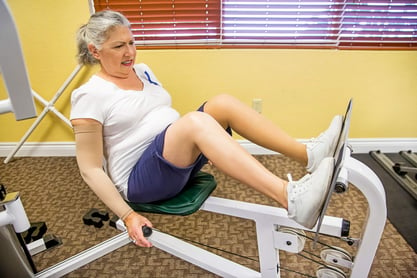 We’ve all heard that staying active as we get older is important, but let's really dig into the key players: what exactly can help prevent hospital visits due to common injuries like osteoporosis-related fractures?
We’ve all heard that staying active as we get older is important, but let's really dig into the key players: what exactly can help prevent hospital visits due to common injuries like osteoporosis-related fractures?
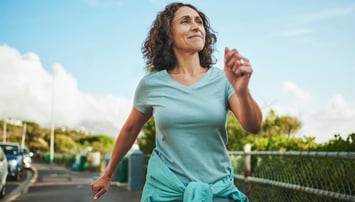 Walking is a simple act that can have some impressive health benefits. Most of us walk to get from one place to another but let’s use this daily activity to feel better and take care of ourselves. Walking requires no special equipment or training, making it incredibly accessible to people of all ages and fitness levels. Whether you live in a city or a quiet suburban neighborhood, you can easily incorporate walking into your routine. Tailor your walking workouts to suit your schedule and preferences. Whether it's a brisk walk during your lunch break or a leisurely stroll after dinner, the flexibility and convenience of walking make it a sustainable exercise option for long-term health and fitness. Here are three reasons why walking should be prioritized in your fitness regimen.
Walking is a simple act that can have some impressive health benefits. Most of us walk to get from one place to another but let’s use this daily activity to feel better and take care of ourselves. Walking requires no special equipment or training, making it incredibly accessible to people of all ages and fitness levels. Whether you live in a city or a quiet suburban neighborhood, you can easily incorporate walking into your routine. Tailor your walking workouts to suit your schedule and preferences. Whether it's a brisk walk during your lunch break or a leisurely stroll after dinner, the flexibility and convenience of walking make it a sustainable exercise option for long-term health and fitness. Here are three reasons why walking should be prioritized in your fitness regimen.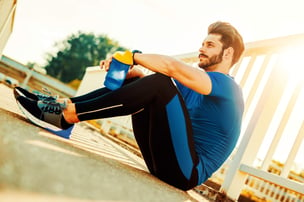 When it comes to athletic performance and recovery, one advancement in recent years has been compression clothing. From professional athletes to fitness enthusiasts, compression garments have become a staple in many wardrobes. But what exactly is the science behind compression clothing, and how does it impact our bodies during exercise and recovery? Let's dive in and explore the world of compression wear.
When it comes to athletic performance and recovery, one advancement in recent years has been compression clothing. From professional athletes to fitness enthusiasts, compression garments have become a staple in many wardrobes. But what exactly is the science behind compression clothing, and how does it impact our bodies during exercise and recovery? Let's dive in and explore the world of compression wear.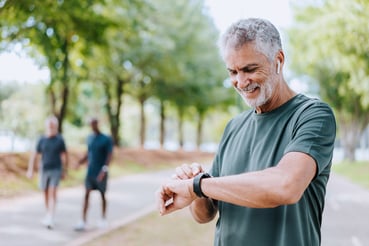 Improving your running time and efficiency can seem overwhelming. Whether you are a beginner or well-seasoned runner there is always room for performance improvement.
Improving your running time and efficiency can seem overwhelming. Whether you are a beginner or well-seasoned runner there is always room for performance improvement.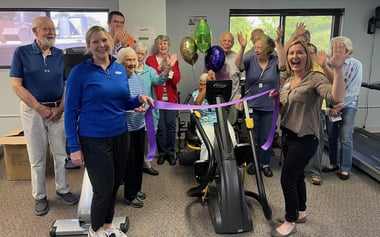 Westminster Village of Terre Haute
Westminster Village of Terre Haute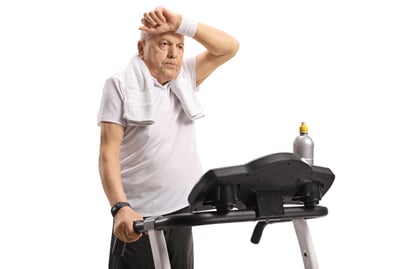 We've all been there – motivated to get fit, only to find ourselves struggling to maintain a consistent workout routine. It's a common hurdle, and the good news is that there are solutions to overcome these challenges. Let's explore four key reasons you might find it hard to stick with your workouts and how to conquer them.
We've all been there – motivated to get fit, only to find ourselves struggling to maintain a consistent workout routine. It's a common hurdle, and the good news is that there are solutions to overcome these challenges. Let's explore four key reasons you might find it hard to stick with your workouts and how to conquer them.